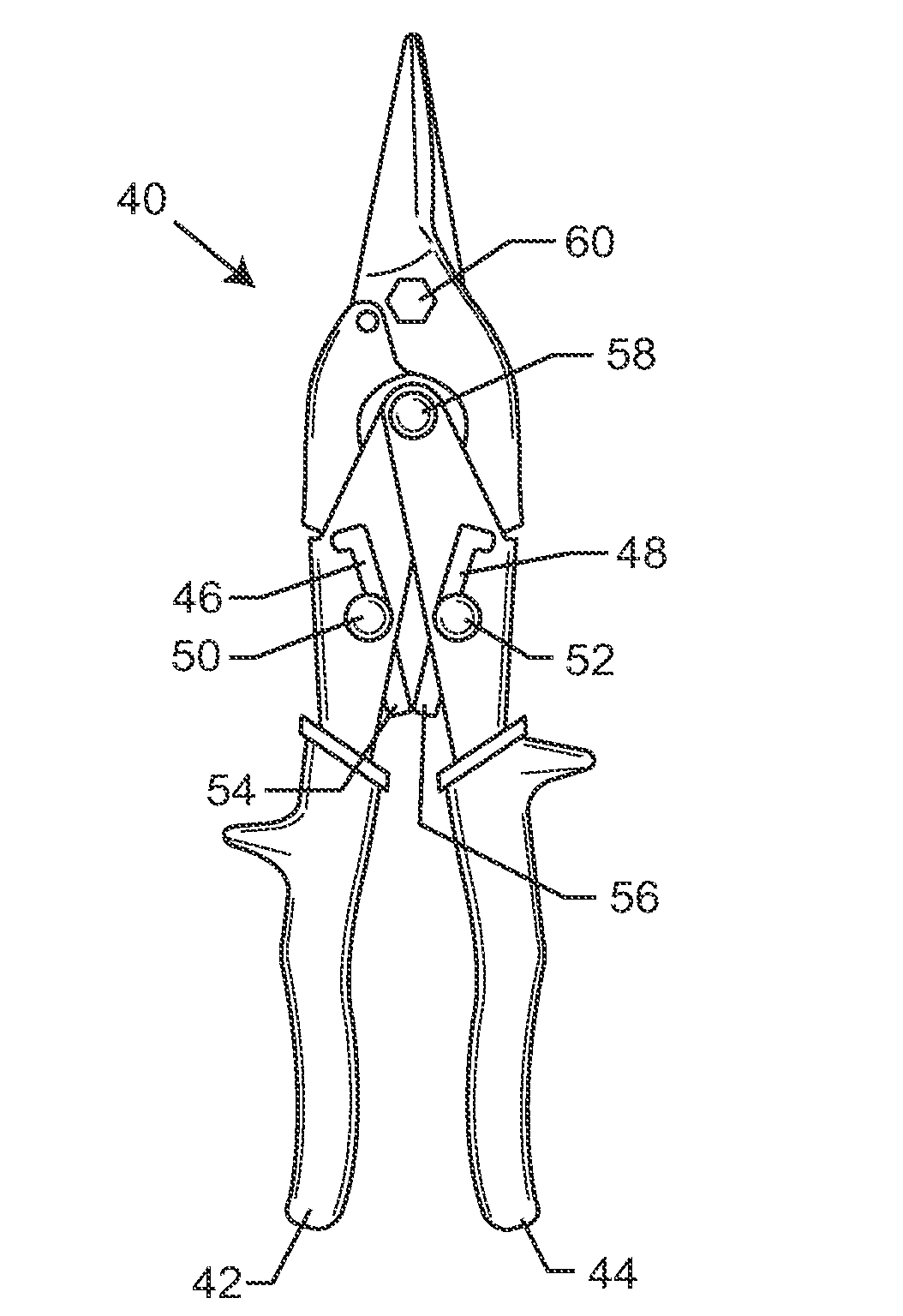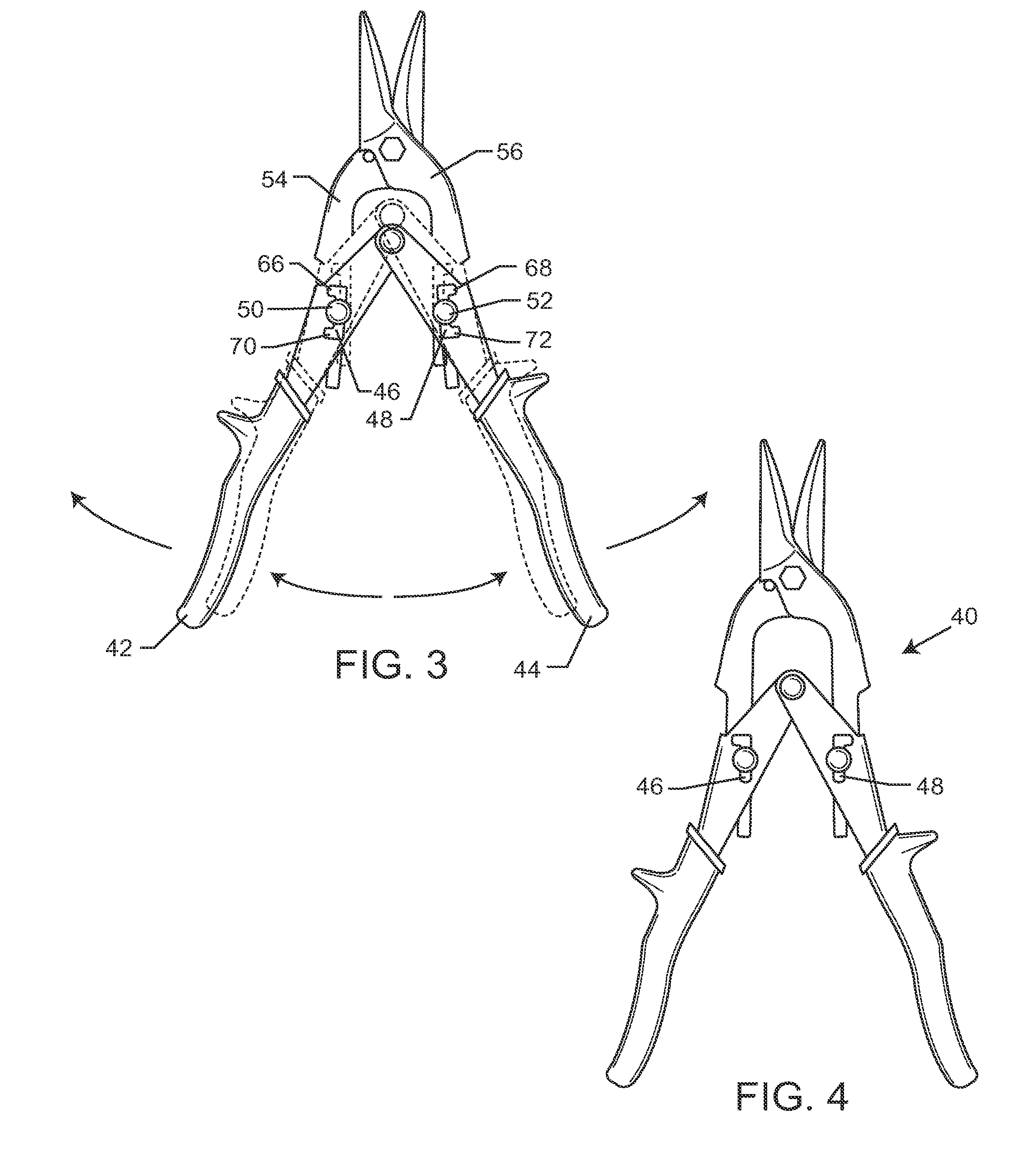Two stage force multiplier tin snips
a force multiplier and snip technology, applied in the field of snips, can solve the problems of inability to adjust the handle, the operation of large tools may become overly cumbersome and inoperable, and the amount of physical input force of snips or shears intended to cut harder materials may be unacceptably large, so as to facilitate the inversion of the handle
- Summary
- Abstract
- Description
- Claims
- Application Information
AI Technical Summary
Benefits of technology
Problems solved by technology
Method used
Image
Examples
Embodiment Construction
[0066]As shown in the exemplary drawings for purposes of illustration, the present disclosure for tin snips is referred to generally by the reference numeral 40. Turning now to the representative figures in the specification, FIG. 1 illustrates the tin snips 40 having a set of pivotably connected handles 42, 44, each having a slot 46, 48 formed therein. The slots 46, 48 are each adapted to receive a pair of pins 50, 52 which are secured to a pair of blade tangs 54, 56. The handles 42, 44 move relative to one another about a common handle axis point 58. The pair of blade tangs 54, 56 are correspondingly configured to pivot about a base axis point 60 that separates the blade tangs 54, 56 from a pair of cutting blades 62, 64 (shown best in FIG. 2). The cutting blades 62, 64 are shown in FIG. 1 in closed form. In this embodiment, the slots 46, 48 are formed in the handles 42, 44 and are configured to have the tin snips 40 operate in a compact position, as shown in
[0067]FIG. 1, or an ext...
PUM
| Property | Measurement | Unit |
|---|---|---|
| force | aaaaa | aaaaa |
| mechanical advantage | aaaaa | aaaaa |
| constant force | aaaaa | aaaaa |
Abstract
Description
Claims
Application Information
 Login to View More
Login to View More - R&D
- Intellectual Property
- Life Sciences
- Materials
- Tech Scout
- Unparalleled Data Quality
- Higher Quality Content
- 60% Fewer Hallucinations
Browse by: Latest US Patents, China's latest patents, Technical Efficacy Thesaurus, Application Domain, Technology Topic, Popular Technical Reports.
© 2025 PatSnap. All rights reserved.Legal|Privacy policy|Modern Slavery Act Transparency Statement|Sitemap|About US| Contact US: help@patsnap.com



